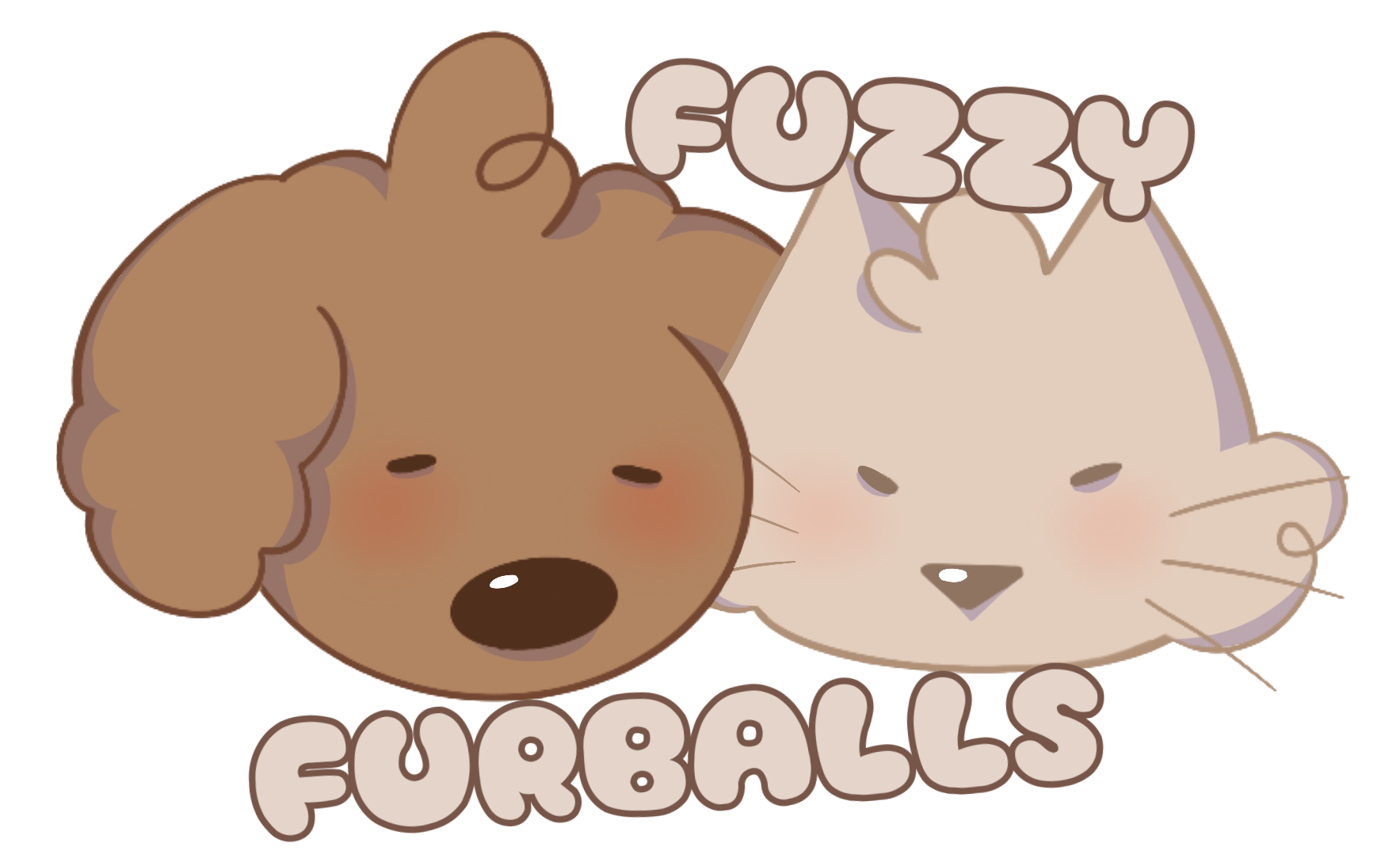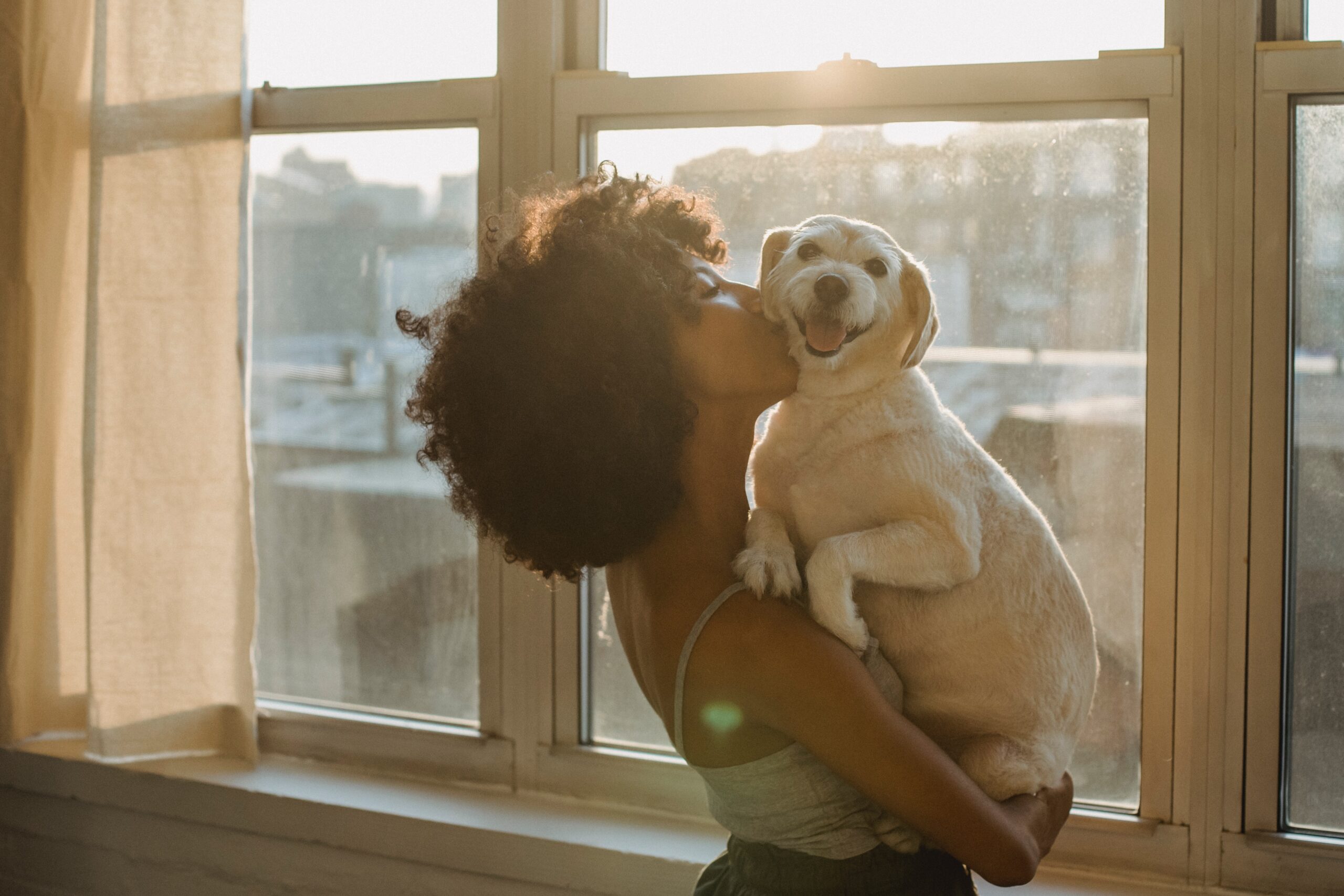From the ancient days of companionship around campfires to modern tales of loyal service and heartwarming friendships, the bond between humans and dogs is a remarkable narrative woven into the fabric of our history. Dogs have seamlessly integrated themselves into our lives, becoming not just pets, but cherished members of our families. This unique and enduring connection is a testament to the profound impact dogs have on our emotional well-being and daily existence.
In a world that often feels fast-paced and disconnected, the love and companionship of a dog offer a respite of genuine and unconditional affection. As dog owners, we often sense that our furry friends feel something akin to love for us, but comprehending the depth and nature of this sentiment is a pursuit that transcends sentimentality. Scientific insights into a dog’s affectionate behaviors provide a tangible foundation upon which we can build a stronger, more empathetic relationship with our four-legged companions.
Intriguingly, science has embarked on a journey to decode the intricate language of canine emotions. While dogs lack the linguistic capacity to express their feelings in the same way humans do, they communicate their love through a myriad of subtle cues deeply rooted in biology and evolutionary history. Throughout this article, we will embark on a captivating exploration of these scientifically-supported indicators of a dog’s love. From the chemistry of oxytocin to the fascinating dance of body language, we will unravel the mysteries of how dogs express their affection and explore the meaningful ways in which they demonstrate their love for us.
Unveiling Canine Love: Scientific Insights
The Role of Oxytocin in Human-Dog Relationships
- Oxytocin as the “Love Hormone”
Oxytocin, often referred to as the “love hormone,” is a neuropeptide that plays a vital role in social bonding and emotional connections. While initially studied for its impact on maternal behavior and childbirth, recent research has extended its significance to human-animal relationships. Oxytocin is released in response to positive social interactions, fostering feelings of trust, empathy, and attachment.
- Research on Oxytocin Levels in Dogs and Humans During Interactions
Scientific investigations have unveiled the remarkable parallels between human and canine oxytocin responses. Studies have shown that interactions between dogs and their owners trigger oxytocin release in both parties, reinforcing the idea of a mutual emotional connection. When you gaze into your dog’s eyes or engage in affectionate touch, not only do you experience an oxytocin surge, but your canine companion does as well.
Neuroscientific Evidence of Emotional Connection
- Brain Imaging Studies Revealing Emotional Responses in Dogs
Advancements in neuroimaging techniques, such as functional magnetic resonance imaging (fMRI), have allowed researchers to peek into the minds of dogs. These studies have provided compelling evidence that dogs experience emotions similar to humans. When exposed to scents, sights, or familiar human faces, areas of the canine brain associated with positive emotions and reward systems light up, indicating an emotional response.
- Similarities Between Dog and Human Brain Activation During Bonding
Remarkably, the emotional connection between humans and dogs is also reflected in brain-to-brain synchrony. Research demonstrates that when a dog and its owner interact, their brain activity synchronizes, showcasing the neural underpinnings of companionship. This synchronization reinforces the idea that dogs are not just attuned to our emotions but are capable of forming a deep emotional bond with us.
Behavioral Cues Indicating Love and Attachment
- Reciprocal Gazing and Eye Contact
The adage that “the eyes are the windows to the soul” holds true for dogs as well. When your dog locks eyes with you, it’s not just seeking a treat or attention; it’s engaging in a powerful form of communication. Mutual gazing triggers oxytocin release in both you and your dog, fostering a sense of connection and trust.
- Tail Wagging: Nuances and Meanings
Tail wagging is a quintessential canine behavior, but its meaning goes beyond a simple expression of happiness. The direction, speed, and amplitude of tail wagging convey distinct emotions. Research suggests that a wagging tail to the right indicates positive feelings, while a wag to the left might signal negative emotions. Understanding these nuances allows us to interpret our dogs’ emotions more accurately.
- Leaning, Cuddling, and Physical Touch
Physical touch is a cornerstone of human-dog interactions. When your dog leans against you or curls up beside you, it’s not just seeking warmth; it’s displaying a form of attachment and comfort. This behavior mirrors the way humans seek physical closeness with loved ones during times of emotional bonding.
- Playful Behavior as a Sign of Emotional Intimacy
Play is a universal language that transcends species. When your dog engages in playful antics, it’s not just about having fun—it’s a manifestation of trust and emotional intimacy. Just as children play with their parents to strengthen bonds, dogs play with their owners to deepen their connection and express their love.
As we journey through the scientific insights into canine affection, it becomes evident that the love between humans and dogs is not only real but intricately woven into the fabric of biology and behavior. In the next section, we’ll delve deeper into the specific signs that your dog is truly expressing love and attachment.
Signs Your Dog Really Loves You: Decoding the Science
Gaze and Eye Contact
- Mutual Gaze and Oxytocin Release
The power of a shared gaze between you and your dog goes beyond a simple exchange of glances. Studies have shown that when you lock eyes with your furry friend, both of your bodies release oxytocin—the same hormone responsible for nurturing social bonds in humans. This mutual gaze establishes a profound connection, indicating a deep level of trust and affection.
- The “Doggy Smile” and Raised Eyebrows
Have you ever noticed your dog seemingly smiling at you? Research suggests that dogs have a unique way of mimicking human facial expressions. The so-called “doggy smile” involves the raising of eyebrows, resulting in an expression that appears remarkably similar to a human smile. This behavior signifies happiness and positive feelings, reinforcing the emotional bond you share with your dog.
Tail Wagging
- Tail Positions and Emotions Conveyed
While tail wagging is often associated with joy, its intricacies reveal a rich tapestry of emotions. A tail held high signifies confidence and alertness, while a lower position might indicate submission or uncertainty. The speed and intensity of the wag also offer insights: a gentle wag might suggest curiosity, while a vigorous wag expresses excitement. Understanding these tail cues allows you to decipher your dog’s emotional state more accurately.
- Asymmetrical Tail Wagging: Deciphering Emotional Nuances
Recent research has unveiled a fascinating aspect of tail wagging—its asymmetry. Dogs tend to wag their tails more to the right when they are happy and to the left when they are anxious. This nuanced behavior provides a window into your dog’s emotional landscape, allowing you to respond appropriately and nurture a sense of security.
Physical Affection
- Cuddling and Leaning: Manifestations of Attachment
When your dog snuggles up against you or leans its weight into your touch, it’s not just seeking comfort—it’s a demonstration of attachment. Dogs engage in these behaviors to feel close and secure, mirroring the way humans seek physical closeness with loved ones.
- The Role of Touch in Strengthening the Bond
Physical touch, such as stroking or petting, triggers the release of oxytocin in both dogs and humans. This tactile interaction reinforces the emotional connection between you and your dog, deepening the sense of trust and affection. Regular physical affection contributes to a stronger, healthier bond over time.
Playful Interactions
- Play Bows and Their Significance
The play bow is a universal gesture that dogs use to invite interaction and play. When your dog assumes this position—front legs lowered and hindquarters raised—it’s an invitation to engage in shared fun. This behavior highlights your dog’s comfort around you and its desire for joyful companionship.
- Shared Activities as Indicators of Companionship
Engaging in activities together, such as playing fetch, going for walks, or simply spending quality time, strengthens the bond between you and your dog. These shared experiences create lasting memories and contribute to a sense of camaraderie, reflecting your dog’s genuine affection and love.
By understanding and interpreting these scientifically-backed signs of canine love, you can cultivate a deeper appreciation for the unique emotional connection you share with your dog. As we continue our exploration, we’ll delve into the fascinating interplay between instinct and learned behaviors that underpin your dog’s expressions of affection.
Beyond Instinct: How Dogs Express Love
Contrasting Natural Instincts and Learned Behaviors
The myriad ways dogs express love encompass a delicate interplay between their innate instincts and the behaviors they’ve acquired through their interactions with humans. While certain behaviors, like tail wagging and play bows, can be traced back to ancestral survival mechanisms, others have evolved over centuries of coexistence with humans. This combination of instinct and learned behaviors creates a unique tapestry of affection that dogs display toward their human companions.
Evolution of Dogs as Social Animals
The domestication of dogs, spanning thousands of years, has not only shaped their physical appearance but has also profoundly influenced their social nature. Over generations, dogs have developed an extraordinary ability to read and respond to human emotions, creating a harmonious bond unlike any other between two species. This evolution has led to the formation of a social cognitive system in dogs, allowing them to understand and navigate the complexities of human relationships.
The Importance of Positive Reinforcement in Nurturing Affection
Positive reinforcement, a cornerstone of modern dog training, plays a pivotal role in fostering affectionate behaviors. When dogs receive love, attention, and rewards in response to desirable actions, they learn to associate these behaviors with positive outcomes. This association strengthens the emotional connection between you and your dog, reinforcing their affectionate responses. It’s through this process of positive reinforcement that dogs learn to communicate their love in ways that resonate with human interaction.
The interplay between instinct, learned behaviors, and positive reinforcement highlights the dynamic nature of a dog’s expression of love. In the next section, we’ll explore the ways in which you, as a responsible dog owner, can nurture and enhance the bond of affection between you and your furry companion.
Nurturing the Bond: Strengthening Your Dog’s Love
Spending Quality Time Together
The heart of any cherished relationship lies in the time invested. Dogs, being social creatures, thrive on companionship and shared experiences. Quality time together isn’t just about physical presence; it’s about engaging in activities that resonate with your dog’s interests. Whether it’s embarking on new adventures, taking leisurely strolls, or simply cuddling on the couch, these shared moments contribute to a deeper emotional connection.
Training and Mental Stimulation
A mentally stimulated dog is a content and well-adjusted companion. Incorporating regular training sessions into your routine not only reinforces obedience but also provides mental exercise. Teaching new commands, engaging in problem-solving games, and introducing novel challenges tap into your dog’s cognitive abilities. This mental engagement not only prevents boredom but also nurtures their love by creating a sense of accomplishment and mutual understanding.
Positive Reinforcement and Rewards
Positive reinforcement serves as a bridge to effective communication between you and your dog. When your furry friend exhibits behaviors that convey affection and attachment, responding with praise, treats, or toys reinforces these actions. This technique solidifies the connection between their loving behaviors and positive outcomes, encouraging them to express their fondness for you in meaningful ways.
Understanding Your Dog’s Unique Preferences and Needs
Just as humans have distinct personalities, dogs possess individual preferences and requirements. Paying attention to your dog’s body language, vocalizations, and behaviors enables you to discern their unique communication cues. Tailoring your interactions to cater to their preferences, whether it’s belly rubs, fetch games, or quiet moments, demonstrates your commitment to understanding and meeting their emotional needs.
In essence, nurturing your bond with your dog involves a mix of quality time, mental stimulation, positive reinforcement, and an empathetic understanding of their individuality. As you dedicate yourself to cultivating a strong and enduring relationship, you not only foster your dog’s love but also enrich your own life with the unwavering companionship and affection that only a canine friend can provide.
In the final section, we’ll delve into the reciprocal nature of the human-dog relationship, exploring how your love, care, and emotional state influence your dog’s well-being and deepen their attachment to you.
The Reciprocal Relationship: How Your Love Impacts Your Dog
The Concept of Interspecies Emotional Contagion
The emotional bond between humans and dogs transcends language and species barriers. Interspecies emotional contagion refers to the phenomenon where emotions are shared and mirrored between different species. Dogs are highly attuned to human emotions and can sense changes in your mood and demeanor. When you radiate positivity and affection, your dog is likely to reciprocate those feelings, deepening the connection between you both.
Impact of Owner’s Emotional State on Dogs
Research has shown that dogs are remarkably skilled at recognizing human emotional cues. They can discern between happy, sad, and neutral expressions, and even detect more complex emotions like anger or fear. Your emotional state directly influences your dog’s well-being and behavior. When you’re calm and content, your dog is more likely to feel secure and at ease. Conversely, if you’re stressed or anxious, your dog might pick up on those feelings and experience distress as well.
Fostering a Healthy Emotional Environment for Your Pet
Creating a harmonious emotional environment is pivotal in nurturing your dog’s love and well-being. Just as your dog’s behavior and presence impact you, your actions and emotions shape your dog’s experience. Providing consistent care, attention, and positive interactions establish a foundation of trust and security. Engaging in activities that promote relaxation, such as gentle grooming or soothing massages, can alleviate stress and anxiety for both you and your dog.
Additionally, practicing mindfulness and managing your own emotional state can have a positive ripple effect on your dog’s emotional health. Dogs are perceptive and can sense your mood even when words are unspoken. By cultivating your own emotional well-being, you create a stable and loving environment that encourages your dog’s affectionate behaviors.
In this intricate dance of emotions between humans and dogs, your love and care are catalysts for a strong and enduring bond. As you continue to invest in the relationship, your dog’s love for you deepens, creating a reciprocal cycle of affection and companionship that enriches both your lives.
In the final section of this article, we’ll conclude our exploration by summarizing the scientifically-proven signs of your dog’s love, celebrating the joyous and enriching journey of human-dog companionship.
The Reciprocal Relationship: How Your Love Impacts Your Dog
The Concept of Interspecies Emotional Contagion
The emotional bond between humans and dogs transcends language and species barriers. Interspecies emotional contagion refers to the phenomenon where emotions are shared and mirrored between different species. Dogs are highly attuned to human emotions and can sense changes in your mood and demeanor. When you radiate positivity and affection, your dog is likely to reciprocate those feelings, deepening the connection between you both.
Impact of Owner’s Emotional State on Dogs
Research has shown that dogs are remarkably skilled at recognizing human emotional cues. They can discern between happy, sad, and neutral expressions, and even detect more complex emotions like anger or fear. Your emotional state directly influences your dog’s well-being and behavior. When you’re calm and content, your dog is more likely to feel secure and at ease. Conversely, if you’re stressed or anxious, your dog might pick up on those feelings and experience distress as well.
Fostering a Healthy Emotional Environment for Your Pet
Creating a harmonious emotional environment is pivotal in nurturing your dog’s love and well-being. Just as your dog’s behavior and presence impact you, your actions and emotions shape your dog’s experience. Providing consistent care, attention, and positive interactions establish a foundation of trust and security. Engaging in activities that promote relaxation, such as gentle grooming or soothing massages, can alleviate stress and anxiety for both you and your dog.
Additionally, practicing mindfulness and managing your own emotional state can have a positive ripple effect on your dog’s emotional health. Dogs are perceptive and can sense your mood even when words are unspoken. By cultivating your own emotional well-being, you create a stable and loving environment that encourages your dog’s affectionate behaviors.
In this intricate dance of emotions between humans and dogs, your love and care are catalysts for a strong and enduring bond. As you continue to invest in the relationship, your dog’s love for you deepens, creating a reciprocal cycle of affection and companionship that enriches both your lives.
In the final section of this article, we’ll conclude our exploration by summarizing the scientifically-proven signs of your dog’s love, celebrating the joyous and enriching journey of human-dog companionship.
Conclusion
Throughout this exploration of the intricate world of canine affection, we’ve uncovered a wealth of scientific insights into how dogs express their love for us. From the release of oxytocin during mutual gaze to the nuanced language of tail wagging, we’ve deciphered the subtle yet powerful ways in which dogs communicate their emotions. The “doggy smile,” cuddles, and playful interactions have all been illuminated as meaningful expressions of attachment. These scientifically-proven signs serve as windows into the profound connection between humans and their furry companions.
The love shared between a human and a dog is a source of immeasurable joy and fulfillment. Beyond the realm of scientific discovery, the daily interactions, shared adventures, and unwavering companionship remind us of the unique bond we share with our four-legged friends. The laughter, comfort, and unconditional support that dogs bring into our lives are an irreplaceable source of happiness, positively impacting our overall well-being.
As we conclude this exploration, it’s essential to remember that the journey of nurturing a strong bond with your dog is ongoing. The love your dog showers upon you is a precious gift that deserves to be cherished and reciprocated. Just as you’ve learned to interpret their affectionate behaviors, your dog has learned to understand your cues and emotions as well. Through spending quality time, providing mental stimulation, and fostering a positive emotional environment, you can ensure that your dog’s love continues to flourish and deepen over time.










